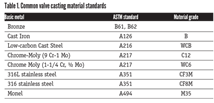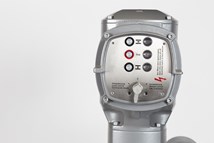Opportunities Abound for Doing Business in Brazil
Brazil holds a tremendous amount of opportunity for manufacturers and vendors today, as it is one of the easiest of the BRIC countries (Brazil, Russia, India and China) in which to conduct business, according to Jerry Owen, president of Intrix Americas LLC.
It’s in the same time zone, friendly to outside businesses, has a growing and young population, a bounty of natural resources, an economy that has done well despite the economic recession, and it’s stable politically, he said. The main constraints in that country are poor infrastructure, high taxes and bureaucracy, but it also has several huge upcoming events that may help move things along, including the World Cup in 2014 and the Olympics in 2016.
Here’s where Owen said the opportunities lie:
Oil and gas: From 2001 to 2009, the oil and gas industry has almost doubled in size, but several recent events have opened the field even wider, including massive recent discoveries in deep sea “pre-salt” layers of the earth. The country is also just beginning onshore activities in an extensive way, doubling production there in the last five years. Owen said the country’s national oil company Petrobras plans to spend more than $224 billion on a capital program from 2010 to 2014.
Refining: To handle all that new capacity, the country will need to greatly expand refining capabilities. Owen said $73.6 billion will be spent in those same four years with 80% of it for new and additional capacity.
Natural gas: Because of its huge and increasing power requirements, Brazil has a tremendous need for natural gas. Most used to be imported from Bolivia, but that will no longer be enough because of increased needs for producing electricity. Owen predicted a three-fold increase from 2009 to 2014.
Biofuels and other renewables: The country’s rich resources are ideal for growing grains for use in biofuels. Ethanol is set to increase 193% by 2014, with exports expected to rise 135%. Investments in new and improved plants are expected to double from $10 billion to $20 billion in the next five years.
Infrastructure projects: With a population of 200 million that is 80% urbanized, the nation’s need for infrastructure is enormous, and the water and wastewater industries present a major investment opportunity.
Going forward, Owen predicts that Brazil’s economy will grow a healthy 5.3% for 2010 and 5% per year for the next five years after that.
Owen suggested that valve manufacturers who want to enter the Brazilian market develop partnerships or relationships within the country’s borders. “The channel structure is similar to yours (U.S./Canadian) working through engineering groups for large projects and integrators to bring projects and companies together,” he said.
“You need to develop a presence within this structure,” he concluded.
RELATED CONTENT
-
An Interview With ... Matt Thiel
Matt Thiel, president of AUMA Actuators, was named chairman at VMA’s 2022 annual meeting.
-
Five Reasons Why the Right Strategy Leads to the Success of Digital Transformation Implementation
The past few years have proven that digital transformation (DT) is more than just a trend. It is becoming one of the frontrunners for ensuring business continuity through modernizing times. However, despite being an essential component for adaptability in a competitive industry, not all companies would consider their DT implementation a success.
-
Piping Codes and Valve Standards
As with every intended use for valves, piping carries its own set of standards that valve companies and users need to understand.










 Unloading large gate valve.jpg;maxWidth=214)